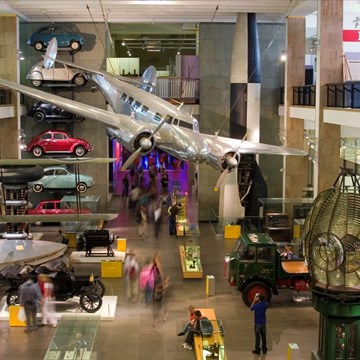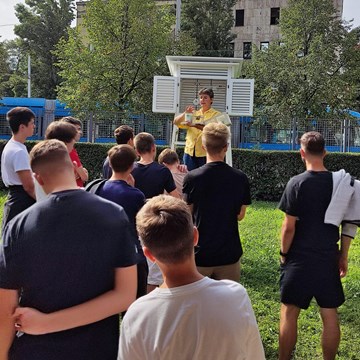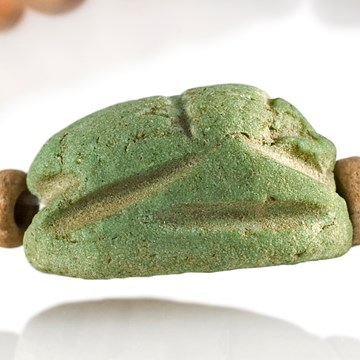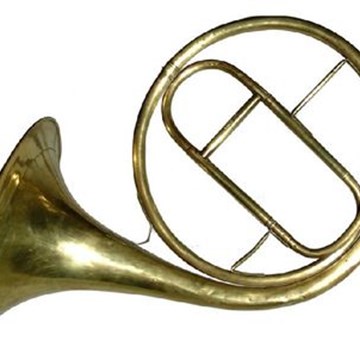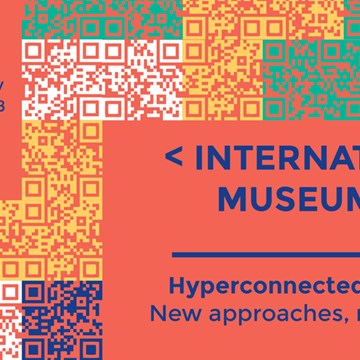BOGDAN BOGDANOVIĆ: NEKROPOLIS
In 1989, the first Piranesi Award was presented to prominent Belgrade-based architect Bogdan Bogdanović for the Memorial Park Dudik in Vukovar, whose construction was finished nine years prior to the Award's establishment. This exhibition, organised by the Dessa Gallery Ljubljana in collaboration with the Belgrade architect and architectural historian Jelica Jovanović and the Piran Coastal Galleries, marks the 35th anniversary of Piranesi Award and reminds us of Bogdanović’s oeuvre, namely the memorials, which are globally among the most famous works of Yugoslav architecture. Their prominence can be attributed to their beauty and variety, which stem from the craft, erudition, and versatility of their author. His political background and his misfortune late in his life have also played a part in this newly found interest, but many of the memorials often come to be recognized as the architectural and sculptural gems, completely divorced from their commemorative and didactic purposes. However, Bogdanović himself often referred to them as necropoleis, the cities of the dead, especially when it came to the memorials which had been built within the already existing urban environments. Bogdanović masterfully planned the placement and the landscaping of these necropoleis, juxtaposing them against the urban tissue of the towns and thus creating – even imposing – a dialogue. Even within the context of the present day's wilful oblivion, Bogdanović’s necropoleis provide a place of peaceful seclusion within the lavish greenery and act as a reminder of the price having been paid for such peace with the omens made of concrete, stone, and timber emerging from the meadows, forests, and bodies of water.
The exhibited material has never been presented in public as these are materials which either accompanied Bogdanović into his exile(s), or remained carefully stored away in the family's Belgrade apartment, covered with the patina of time. The core of the exhibition features photographs made by Bogdanović himself, who was an avid amateur photographer. These showcase his monuments from a more intimate and self-exploratory perspective with the palpable, eerie atmosphere of suspense. These were the materials which Bogdanović often used for his lectures, or the inconspicuous official plans and designs for the memorials, which were submitted to the local administrations. There are also photographs of the stonemason Džunić’s crew from Temska, with whom he Bogdanović collaborated for many years, and the contemporary photographs of the sites provided by my colleagues Vladimir Kulić and Andrew Lawler. It was only recently, owing to the tireless work of many researchers and the support of Bogdan Bogdanović's late wife, professor Ksenija Anastasijević, that these materials have resurfaced and have therefore become available to be exhibited.
Bogdan Bogdanović (b. Belgrade, 1922, d. Vienna, 2010) was a Belgrade-based Yugoslav architect, urbanist, university professor, writer, and politician. From 1993 until his death, he was exiled to Vienna due to his vocal opposition to nationalist politics in Serbia and Yugoslavia. He was the author of some of the most acclaimed memorial sites dedicated to the victims of World War 2 and the People’s Liberation Struggle in former Yugoslavia. He was a professor at the Faculty of Architecture of the University of Belgrade, the Faculty’s vice dean, and appointed dean for a single term, as well as the founder of the informal school of architecture in Mali Popović. He was mayor of Belgrade from 1982 to 1986. He was the laureate of October Awards in 1960 and 1966, Republican and Federal Awards of newspaper “Borba" in 1965, 7th July Lifetime Achievement Awards in 1976, Grand Award for Architecture and Piranesi Award in 1989, Herder Award in 1997, the Austrian Cross of Honor for Science and Art in 2002, and the Gold Medal of the City of Vienna in 2003.
Jelica Jovanović
Exhibitions and events
Activities from this museum
We don't have anything to show you here.



